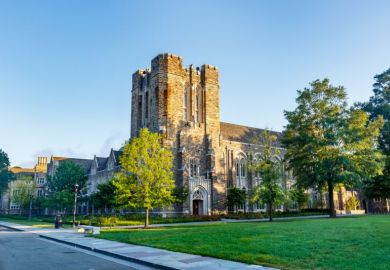Imagine a university that has gone through dramatic demographic shifts in recent years. The number of low-income students enrolled has doubled to almost 60 per cent of the student body. The racial and ethnic make-up has morphed from majority white to one where 70 per cent of the students are now non-white. Average class sizes are up, and average SAT scores for incoming students are down.
Now add the following details: simultaneous with these demographic shifts, the university has raised its graduation rates by 23 percentage points and eliminated all achievement gaps based on race, ethnicity and income level.
Many people would assume that I have entered the realm of fantasy. In fact, I am recounting the actual circumstances of Georgia State University over the past decade. By focusing on big data and leveraging cutting-edge technologies, Georgia State has done what was once thought to be impossible for a modest-resourced institution: deliver individualised, timely support to students at scale.
Seven years ago, we reviewed the effectiveness of academic advising at Georgia State. The results were sobering. Thousands of students were registering for the wrong classes, failing courses, losing scholarships, and dropping out before any advisor reached out to them to help. We needed a new model for advising.
Using 10 years of Georgia State data – more than two million grades – we identified recurring academic behaviours that correlated with students struggling, and we began to track all Georgia State students for 800 risk factors daily.
Did a student register for the wrong course? Did they perform poorly in a prerequisite course? As soon as an alert went off, an advisor proactively reached out to the student with help. Over the past 12 months, we have had more than 55,000 one-on-one meetings with students that were prompted by alerts emerging from this advising platform.
Since the launch of this new model in 2012, thousands of additional students are graduating, and (because they are going off path less frequently) they are taking less time to do so, graduating half a semester faster.
In 2015, we were facing growing challenges with “summer melt” – freshmen who had confirmed their intent to enrol at Georgia State but who never showed up for autumn classes. We had hundreds of students who fitted in to this category – fully admitted, registered for courses, but simply missing when the school year began.
In 2016, we became one of the first universities in the country to deploy an AI-enhanced chat bot in support of student success. With the help of a technology partner, we created a knowledge base of 2,000 answers to questions commonly asked by incoming students, and we put the answers on a texting platform.
Students could text questions 24/7 and receive an immediate response. Questions like: “who do I have sign my financial aid application when my parents are divorced?” “What do I do if I can’t locate my immunisation records?” “What is an unsubsidised loan?”
In the three months leading up to the start of the autumn 2016 semester, incoming freshmen had more than 200,000 questions answered via the chat bot, in an average response time of 7 seconds. In the process, we reduced no-shows for the term by 22 per cent thus helping more than 300 additional students, mostly low-income, make it to college.
In the classroom, we are now delivering all introductory mathematics courses using adaptive technologies, with students getting hundreds of bits of personalised feedback every hour that they are in class. Students are succeeding in maths classes at rates 35 per cent higher than before we launched the programme, and the number of students completing STEM degrees has more than doubled in the past five years.
These initiatives are based on an age-old truth: students perform best when they receive frequent, personalised attention.
So what makes them revolutionary? There was a time when such personalised attention could only be provided by the most elite (and best-resourced) institutions. The formula was simple and unwavering: large faculties and small enrolments equaled strong results and high costs. But, Georgia State University – along with a handful of other large, non-traditional, public universities such as Arizona State and Central Florida – has worked to develop a new model of postsecondary education that is both highly personalised and offered at scale for reasonable costs.
Because of this approach, students from underserved backgrounds are succeeding at unprecedented levels. In fact, last year Georgia State became the first not-for-profit college or university in US history to confer more than 2,000 bachelor’s degrees to African American students in a single year.
The tech and data revolution in higher education is not a fantasy. It’s coming soon to a campus near you.
Timothy Renick is senior vice-president for student success and a professor at Georgia State University.




